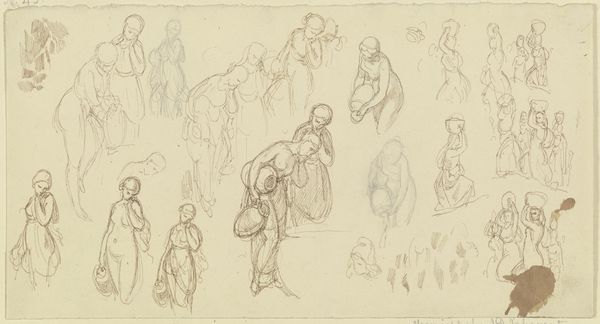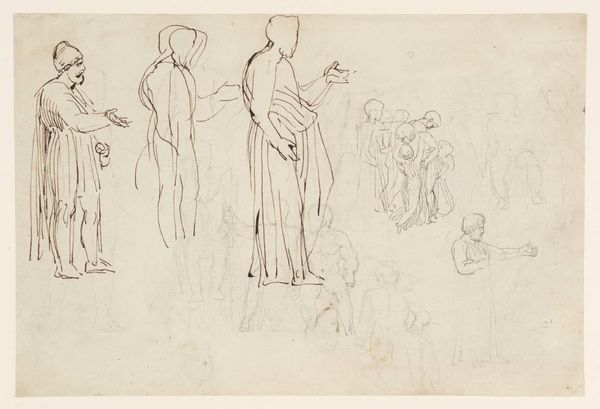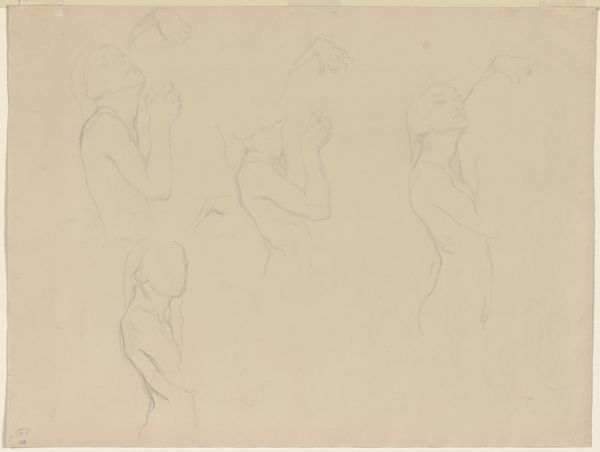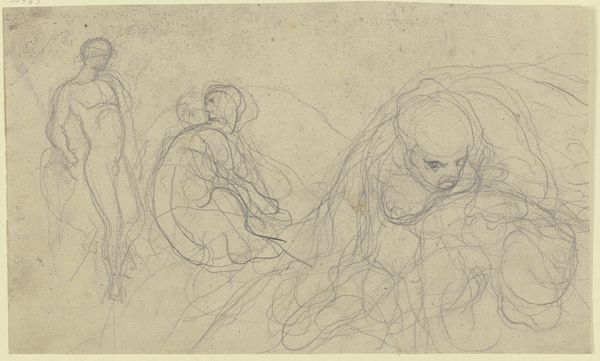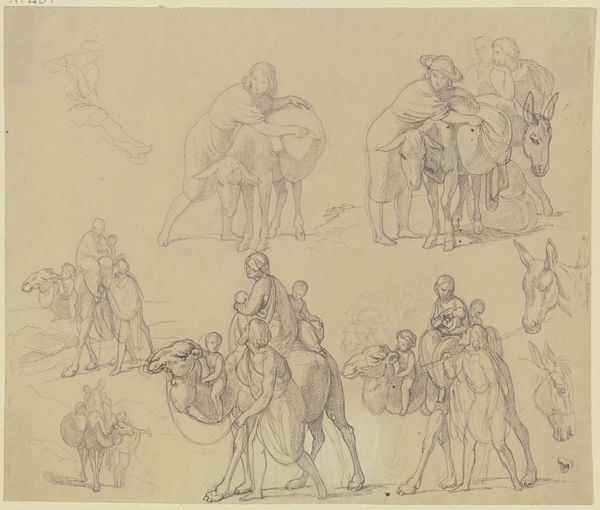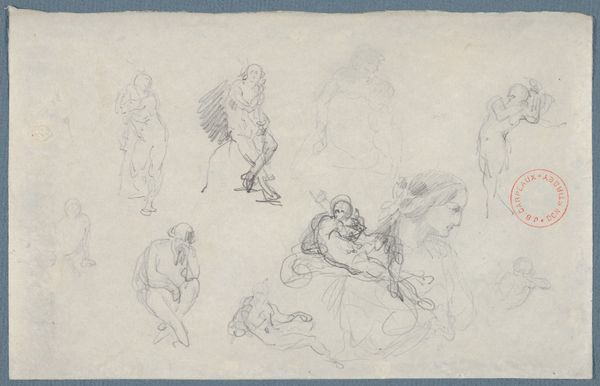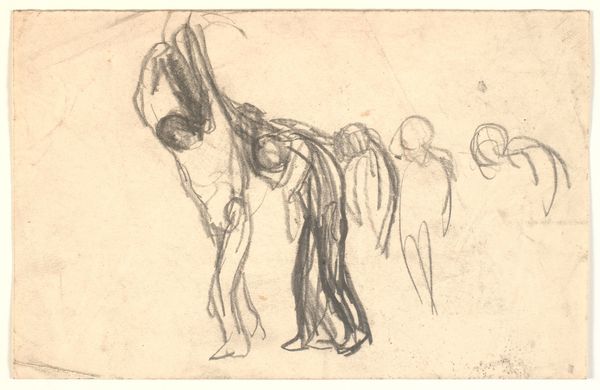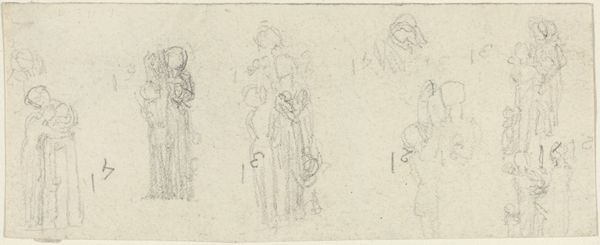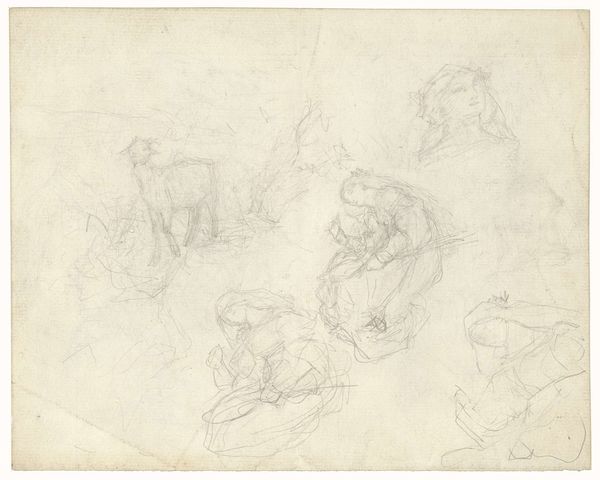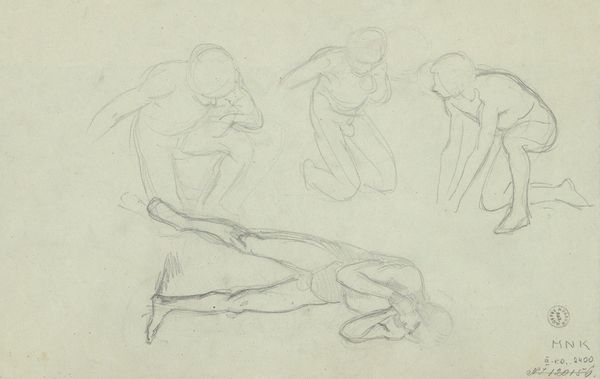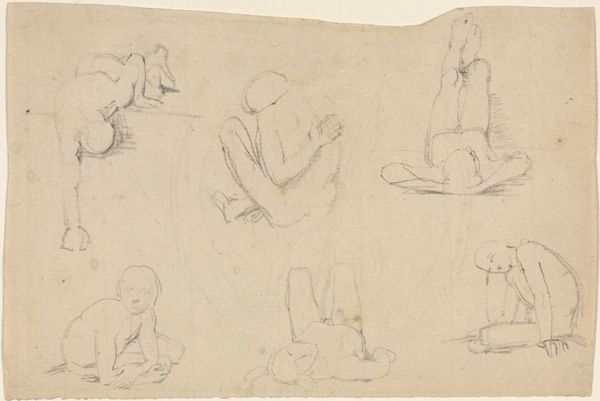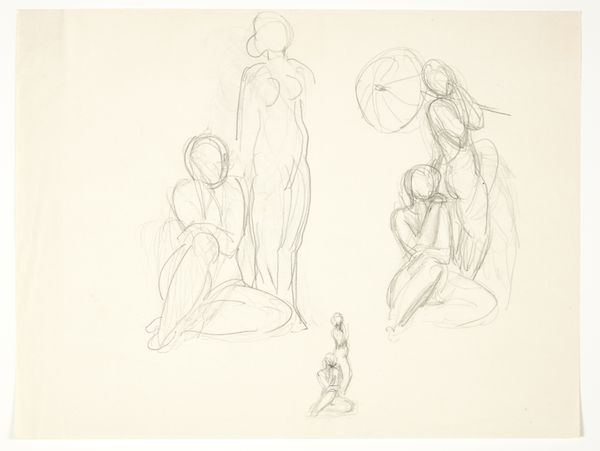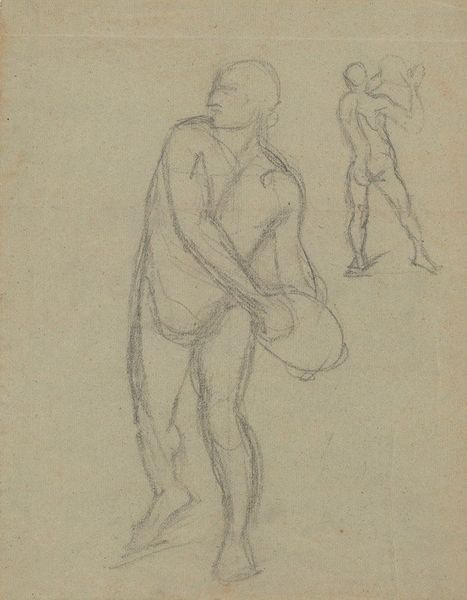
drawing, ink, pencil
#
portrait
#
drawing
#
figuration
#
ink
#
pencil
#
sketchbook drawing
#
genre-painting
#
realism
Copyright: Public Domain
Editor: This drawing, titled "Studienblatt: Junge Frau, einen Krug ausgiessend," which roughly translates to "Study Sheet: Young Woman Pouring a Pitcher," is by Gustav Heinrich Naeke and appears to be made using pencil and ink. There's a sense of everyday life, of women at work, but it’s presented in this fragmented, almost ephemeral way. What do you make of it? Curator: It's a study sheet, yes, but I see more than just sketches of daily life. Naeke, whether consciously or not, taps into centuries of representing women performing mundane tasks, often connecting them to ideas of servitude or domesticity. The repetition and slight variations, the focus on gesture—they hint at the labor involved in these acts, yet the figures themselves remain somewhat anonymous and undefined. Do you see any commentary, even subtle, on women's roles here? Editor: That's interesting, I was so focused on the composition that I didn’t consider gender roles explicitly. It does feel…distant. Maybe a bit detached. Is Naeke perhaps documenting more than just the action, perhaps capturing the feeling of repetitiveness of certain types of domestic labour performed by women? Curator: Exactly. It makes us consider the male gaze and representation within the era. The fact that it is a study also offers a behind-the-scenes perspective on the art-making process itself. Editor: So, it reveals Naeke’s thought process, while simultaneously asking us to think about societal expectations imposed on women during that period, perhaps commenting on how their roles may feel repetitive or unfulfilling. It feels like so many layers interacting on the same page. Thanks, I’m beginning to see more. Curator: Precisely! And that’s the beauty of approaching art with an eye towards its historical and social underpinnings—it encourages us to ask these questions. We need to consider who is portrayed, how they are portrayed and also WHO does the portraying.
Comments
No comments
Be the first to comment and join the conversation on the ultimate creative platform.
